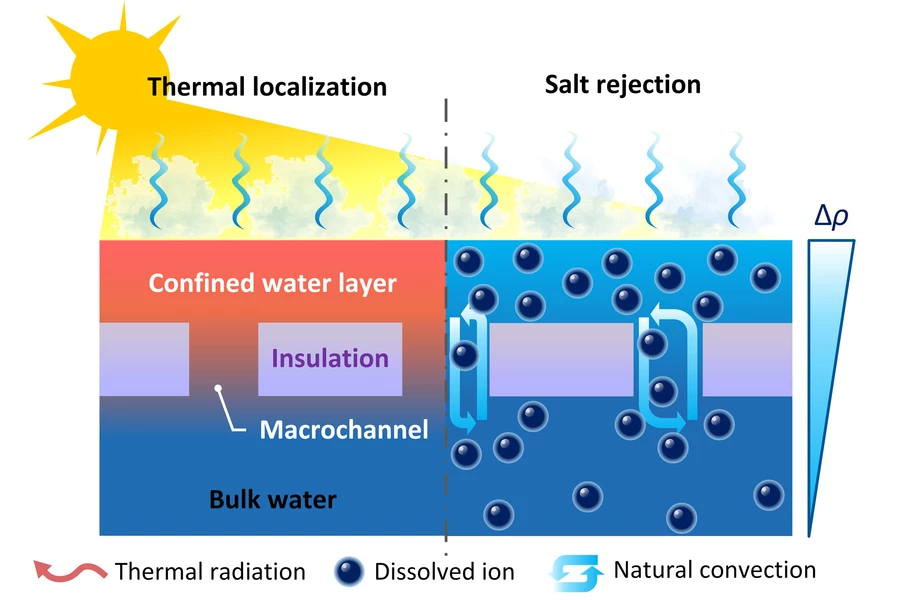Desalination is being explored as a way to solve the shortages of drinking water that plague much of the world, but it has a few issues to iron out. A new design for a solar-powered desalination device prevents the build-up of salt, making for an efficient and affordable system. Just four dollars' worth of materials should be enough for a device that can provide a family's daily drinking water.
Fouling is one of the main problems in desalination systems. As salt and other impurities are being filtered out of water, that material tends to build up on membranes or other surfaces in the device, requiring parts to be regularly cleaned, or worse, replaced. Wicking materials are among the most commonly fouled parts, so for the new project, scientists from MIT and Shanghai Jiao Tong University set out to design a wick-free solar desalination device.
Intended to float on the surface of a body of saltwater, the system is comprised of several layers. A material with 2.5-mm perforations draws water up from the reservoir below, forming a thin layer of water on top. With the help of a dark material that absorbs heat from sunlight, this thin layer of water is heated until it evaporates, so it can then be condensed onto a sloped surface for collection as pure water.
The salt stays behind in the remaining water, but this is where the team’s new idea kicks in. The holes in the perforated material are just the right size to allow for a natural convective circulation to occur. The warmer water above the material – which is now far more dense with salt – is drawn back down into the colder body of water below. A new layer of water is drawn up to the top of the material and the cycle begins again.

In test devices, the team says that this technique can achieve over 80 percent efficiency in converting solar energy to water vapor, even when the starting water had salt concentrations up to 20 percent by weight. No salt crystals were detected in the device after a week of operation.
Importantly, the system is made of everyday materials, so it should be scalable and inexpensive. The team calculates that a system with a collecting area of just 1 m2 (10.8 ft2) could provide enough drinking water for a family’s daily needs, and the materials to build it would only cost about US$4.
With more refinement, the team says that this desalination design could help bring drinking water to remote or developing areas, and be used as temporary setups to provide disaster relief after regular supplies are interrupted.
The research was published in the journal Nature Communications.
Source: MIT




